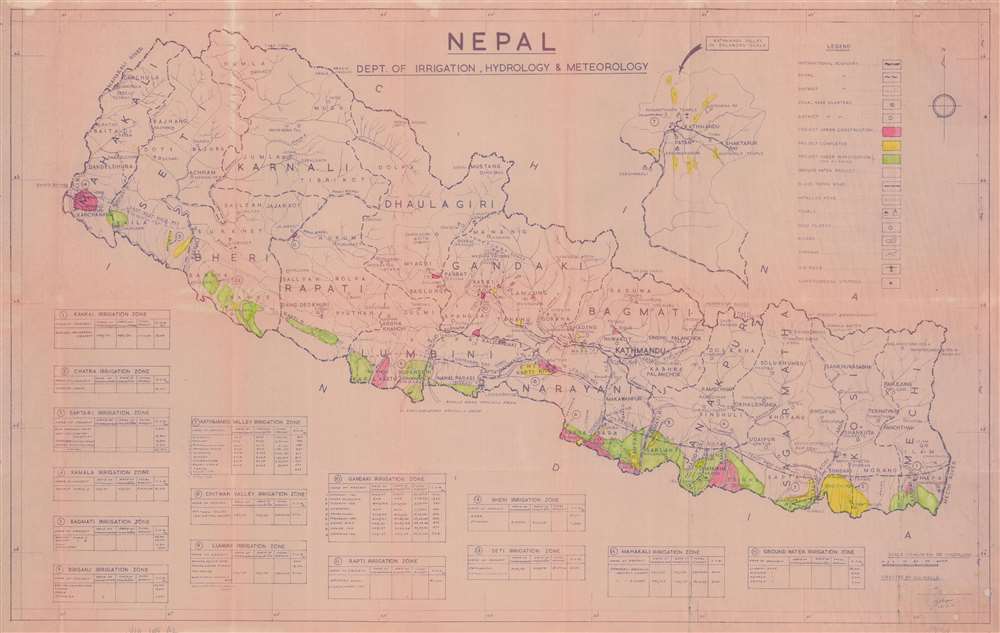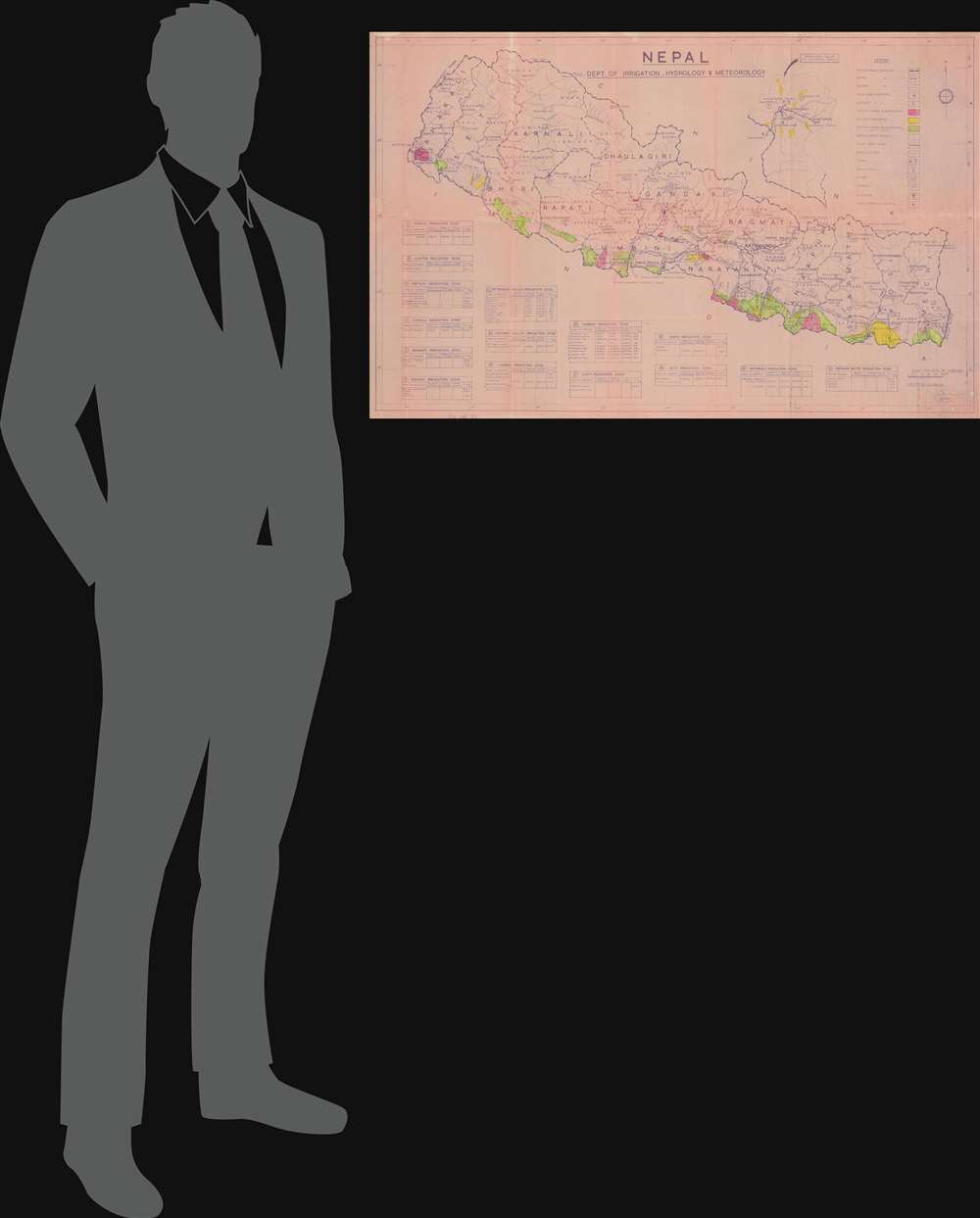1974 Department of Irrigation, Hydrology, and Meteorology Map of Nepal
Nepal-irrigation-1974$500.00

Title
Nepal.
1974 (dated) 21.75 x 34.75 in (55.245 x 88.265 cm) 1 : 10000000
1974 (dated) 21.75 x 34.75 in (55.245 x 88.265 cm) 1 : 10000000
Description
This is a 1974 Department of Irrigation, Hydrology, and Meteorology ferro-gallic map of Nepal. This is a working map likely issued in an exceedingly small run - less than 30 - for internal administration of Nepalese irrigation projects. Fifteen irrigation zones are numerically identified throughout Nepal, all of which have projects that have been completed, are underway, or are being planned. Each irrigation zone is identified in a series of tables below the map, which also name projects within each zone. The dates provided in the tables are given in the Vikram Samvat, also known as the Hundi Vikrami calendar, which is still the official calendar of Nepal. Color shading indicates the current production phase of each project. Individual projects are either numerically identified or labeled by name. An inset situated in the upper right details the Kathmandu Valley, naming nine 'small' completed projects. Pictorial icons mark temples and airfields, while other notations mark roads, holy places, rivers, and streams.
Ferro-Gallic Print
Ferro-Gallic printing, also called 'Iron Gall Print' is a photo-reproductive process developed in 1859 by Alphonse Louis Poitevin. The process became popular in the late 1880s when it was introduced commercially, particularly as it could be used to make fast copies of tracings and allowed for corrections to be made during the printing process. Moreover, copies could be made directly form originals without an intermediary negative process. Due to the chemicals used in this process, the background is never white, instead taking on a pale brown to lavender tint. Like most photo-reproductive processes of the period, ferro-gallic printing was useful only for short run printing, usually of less than 5 copies, and not practical for mass production. Moreover, due to the photoreactive nature of the print, and the low-quality field papers generally used, ferro-gallic prints rarely survive more than 30 years or so, making the early examples extremely scarce. The ferro-gallic process is similar to the Diazo Print or Whiteprint process, which replaced it in popularity in the early 20th century. It was nonetheless used well into the late 20th century in parts of India, Nepal, Africa, and Southeast Asia.Publication History and Census
This map was created under the direction of C.L. Malla and dated September 2, 1974, or with the Vikrami date Bhadra 17, 2031. This is the only known cataloged example.Condition
Very good. Verso repairs to fold separations.




